TOWN IN COLORS - Street photography from Montalbán, Carabobo, Venezuela || ENG-ESP
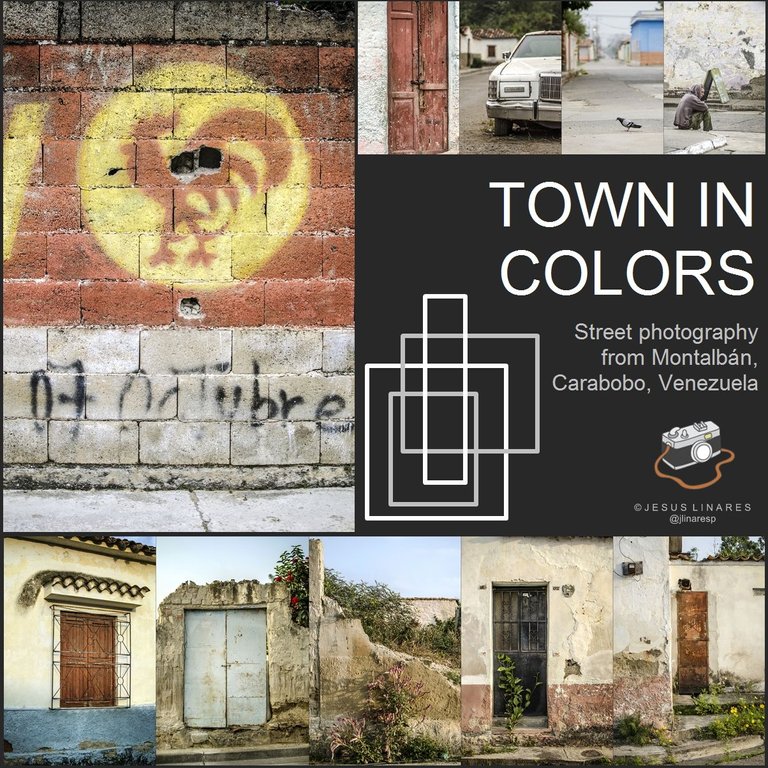
There are a lot of stories and events around anything I can photograph in the streets around my house. This is something simple and logical, as it is the same neighbourhood that saw me born, grow, reproduce and possibly see me die. I know it's a strange thing to do, as I'm in a country where people move around a lot these days, almost always for better prospects in life. But I seem to be part of the contingent that decided to stay. So, all this combined with my hobby of taking street photos can turn into something similar to a "daily chronicle"...
Hay un montón de historias y de sucesos alrededor de cualquier cosa que puedo fotografiar en las calles alrededor de mi casa. Esto es algo simple y lógico,pues se trata del mismo vecindario que me vio nacer, crecer, reproducirme y posiblemente me verá morir. Sé que es algo extraño,pues estoy en un país en donde últimamente las personas cambian de lugar con mucha frecuencia, casi siempre en mejores expectativas de vida. Pero al parecer yo suelo formar parte del contingente que decidió permanecer. Entonces, todo esto se conjuga con mi afición por hacer fotos callejeras y se puede convertir en algo similar a una "crónica cotidiana"...
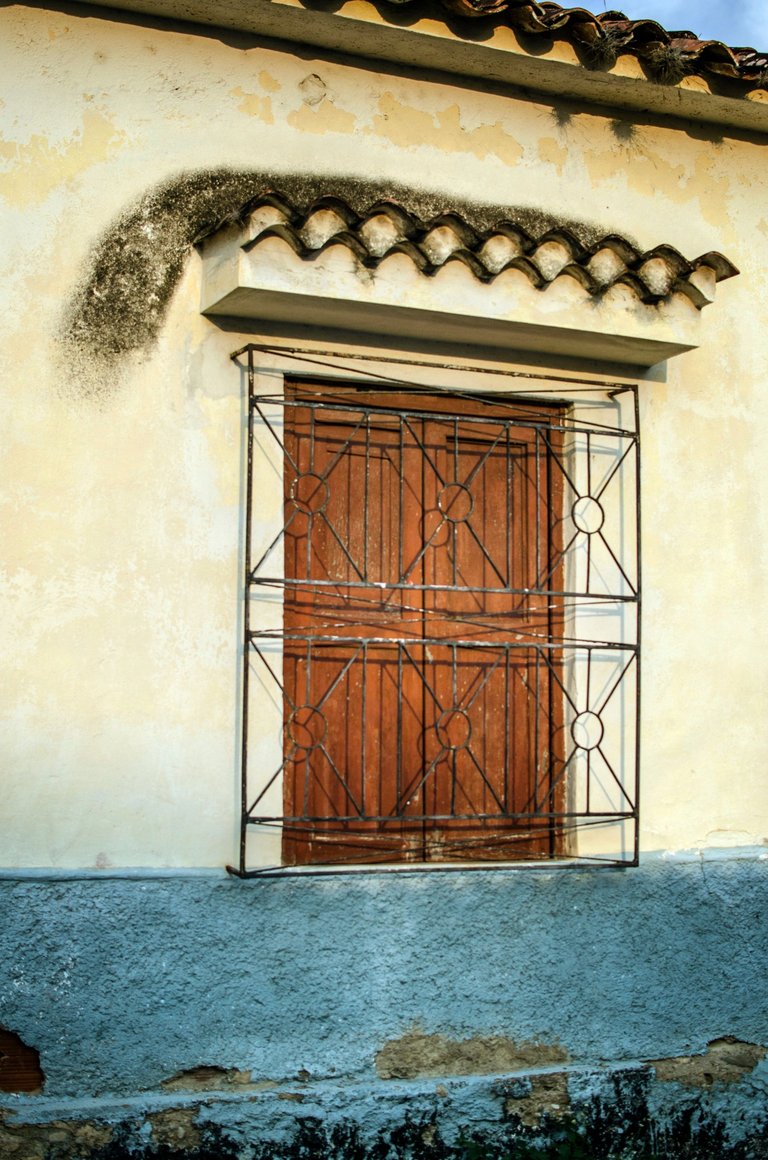
📷 01 - "Doña Bestina's window" / "La ventana de Doña Bestina"
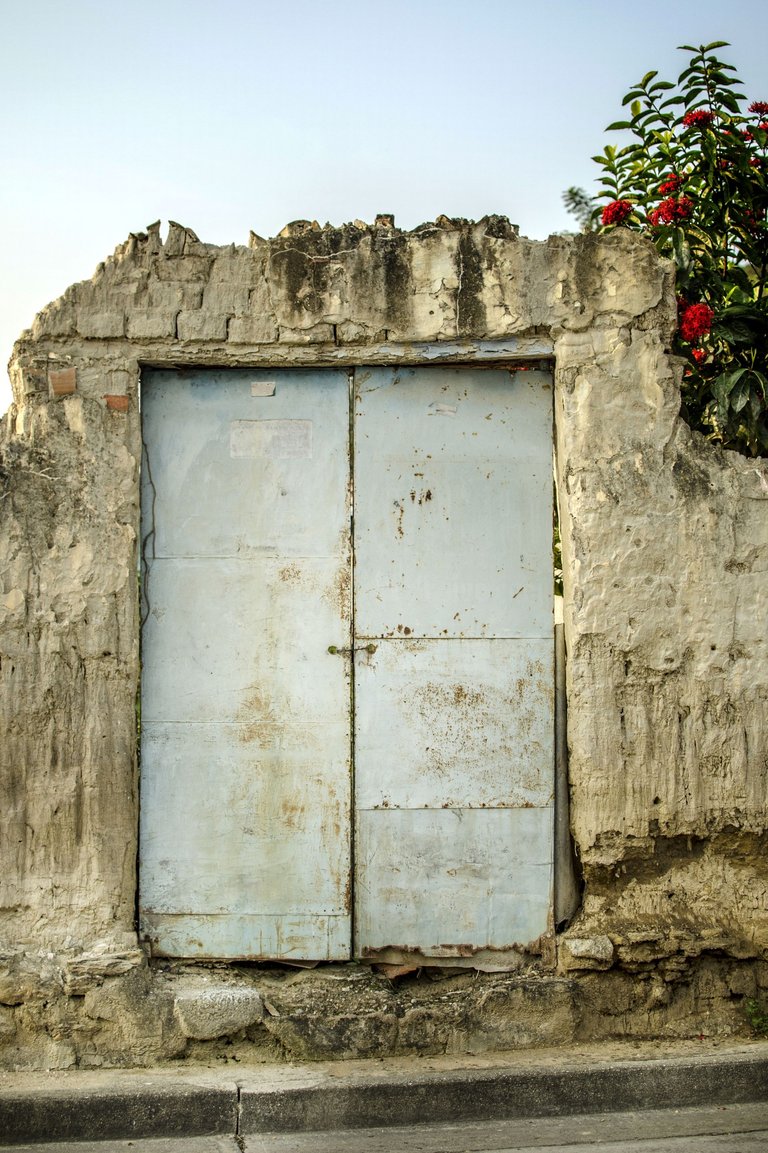
📷 02 - "Ruins of Ochoa's House" / "Ruinas de la casa Ochoa"
Doña Bestina was a sweet, kindly old woman who would stand at the door of her house and greet people in the morning. When I was a kid we used to call her "The Neighbourhood Grandmother" because that's what she was to us. She died perhaps a decade ago, some here say she was over 100 years old. Be that as it may, Doña Bestina left a huge void and in these streets of my village... And just half a street away from Doña Bestina's house, lived the Ochoa family, whose house was enormous and its façade occupied almost half a street. Eventually the huge house was left alone and one day, shortly after Doña Bestina died by the way, the Ochoa's house fell to the ground leaving only a few walls standing and an old brass door, which the old owners used to pass the donkeys to a small corral where they used to sleep.
Doña Bestina era una anciana dulce, bonachona y se paraba en la puerta de su casa a saludar a las personas en horas de la mañana. Cuando yo era un niño solíamos llamarla "La Abuela del Vecindario" porque eso era para nosotros. Ella murió hace quizás una década atrás, algunos aquí dicen que había cumplido los 100 años. Sea como sea, Doña Bestina dejó un vacío enorme y en estas calles de mi pueblo... Y apenas media calle más allá de la casa de Doña Bestina, vivía la familia Ochoa, cuya casa era enorme y su fachada ocupaba casi la mitad de una calle. Con el tiempo la enorme casa quedó sola y un día, poco después de morir Doña Bestina por cierto, la casa de los Ochoa cayó al suelo quedando solo unas cuantas paredes en pie y una vieja puerta de latón, la cual usaban los viejos dueños para hacer pasar los burros hacia un corral en donde estos solía dormir.
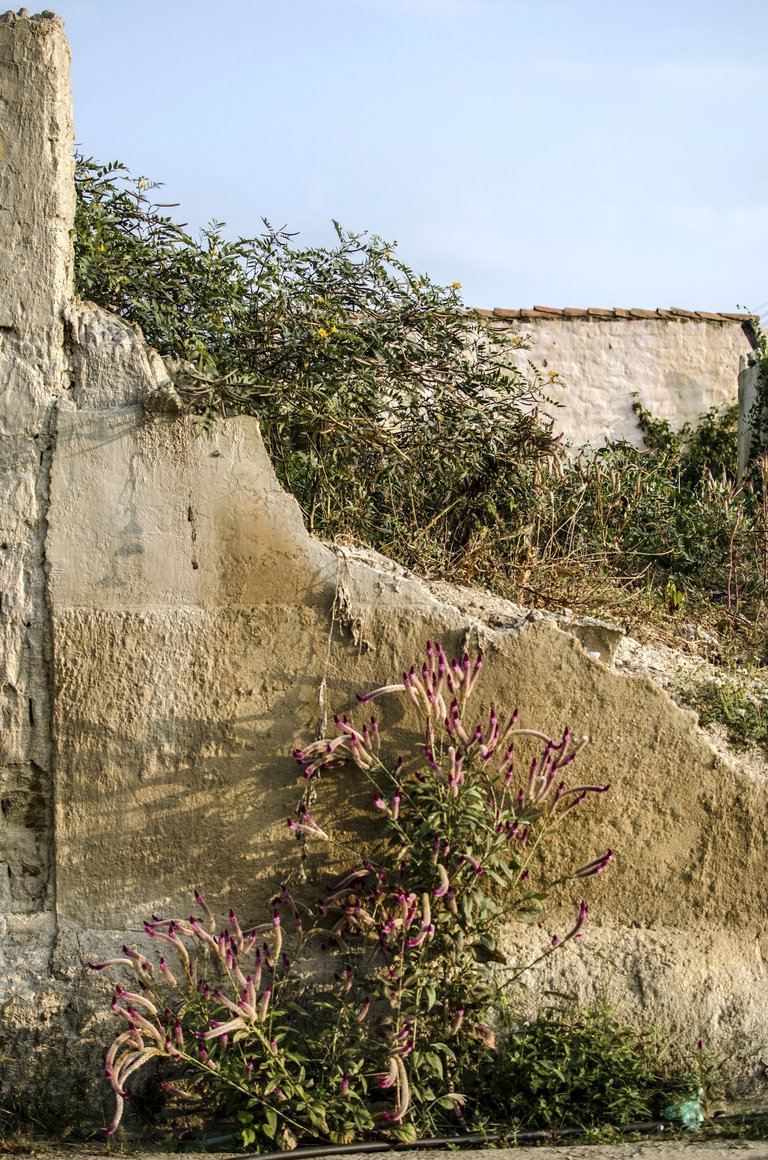
📷 03 - "Mr. Lozano's smithy was there" / "Allí estuvo la herrería de del Sr.Lozano"
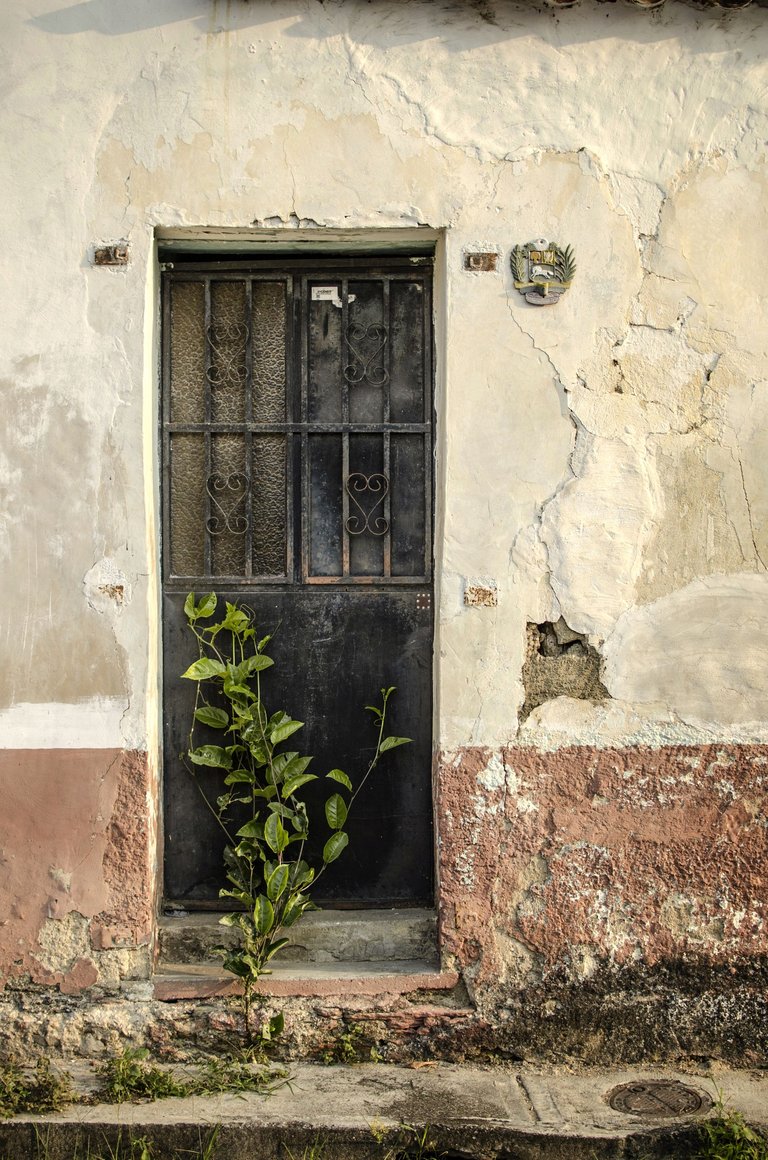
📷 04 - "The main door of Don Jesús" / "La puerta principal de Don Jesús"
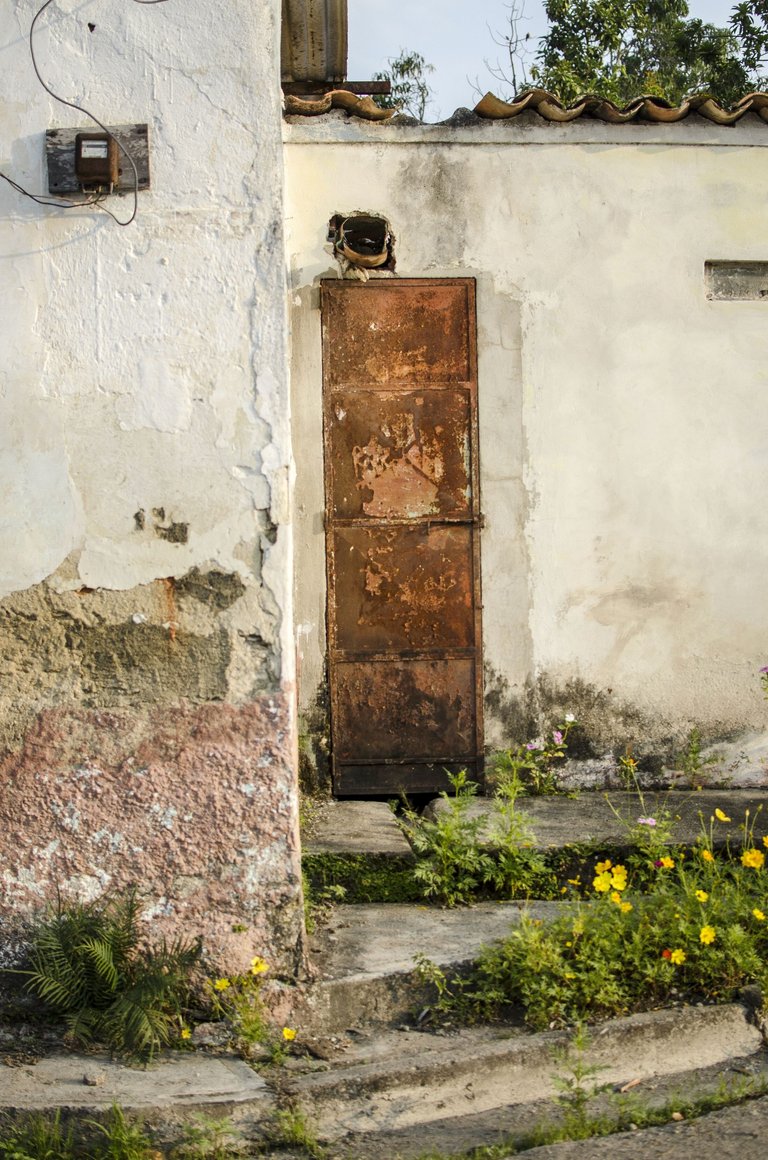
📷 05 - "The little door of Don Jesús" / "La puerta chiquita de Don Jesús"
The old house where Mr. Lozano's blacksmith's shop once stood was still standing until 2020. But one day, after many years of being empty, a huge downpour soaked its walls and threw it to the ground. Mr. Lozano had come from Italy in the middle of the last century fleeing the war and started working as a blacksmith in a village where almost everything was made of wood. So it was that he ended up forging the crosses for the new church steeples, when the old ones collapsed in an earthquake. As well as many crosses for the tombs of the wealthiest people of the town, who in a last display of opulence had crosses forged with their names and some even with a compartment with a glass lid to put a portrait of the deceased... Incidentally, that's the cross on the tomb of Don Jesús, whose house was just a few metres from Mr. Lozano's blacksmith's shop and of whom he was a friend. So much so that he had his cross made about 40 years before he died. Don Jesús had two doors to enter and exit his house. A big one (which he called "principal") to attend to people on Sundays and a smaller one (the " little one") for those who visited from Monday to Saturday. They say that if you arrived on a Monday and knocked on the main door, Don Jesús would shout from inside: "Today it's the little one's turn, go over there and I'll open it for you".
La vieja casa en donde un día estuvo la herrería del Sr. Lozano, seguía aún en pie hasta el 2020. Pero un día, después de muchos años estando vacía, un aguacero enorme remojó sus paredes y la echó al suelo sin remilgos. El Sr. Lozano había llegado desde Italia a mediados del siglo pasado huyendo de la guerra y comenzó a trabajar de herrero en un pueblo donde casi todo se hacía de madera. Así fue que terminó forjando las cruces de las espadañas nuevas de la iglesia, cuando a las viejas las derrumbó un temblor de tierra. Al igual que muchas cruces paras tumbas de la gente más pudiente del pueblo, quienes en un ultimo alarde de opulencia se hacían forjar cruces con sus nombres y algunas hasta con un compartimiento con tapa de cristal para meterles allí un retrato del difunto... Por cierto, así es la cruz de la tumba de Don Jesús, cuya casa estaba a pocos metros de la herrería del Sr. Lozano y del cual era amigo. Tanto así que le mandó a hacer su cruz como 40 años antes de morirse. Don Jesús tenía dos puertas para entrar y salir a su casa. Una grande (la cual llamaba "principal") para atender a la gente los días domingo y otra más pequeña (la "chiquita") para quienes visitaban de lunes a sábado. Cuentan que si uno llegaba un lunes y tocaba por la puerta principal, Don Jesús gritaba desde dentro: "Hoy toca por la chiquita, vaya por allá que ya le abro".
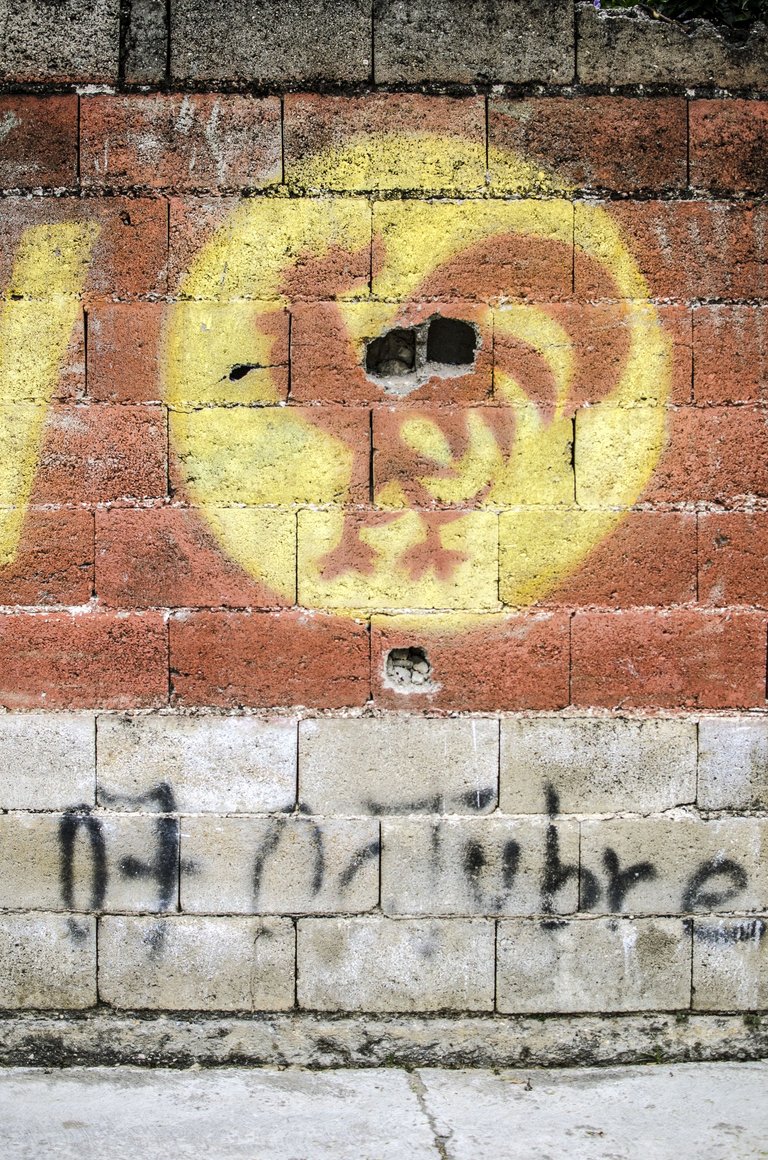
📷 06 - "The Red Rooster's party" / "El partido del Gallo Rojo"
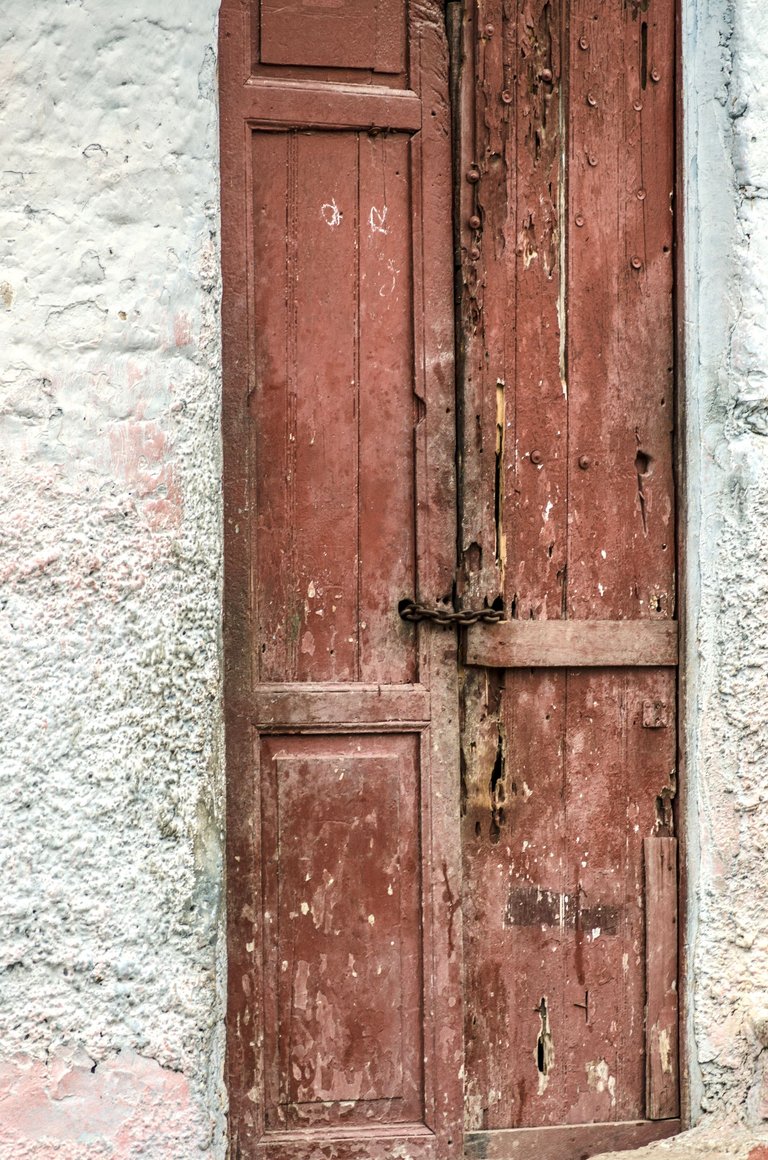
📷 07 - "The door of Maria's house" / "La puerta de la casa de María "
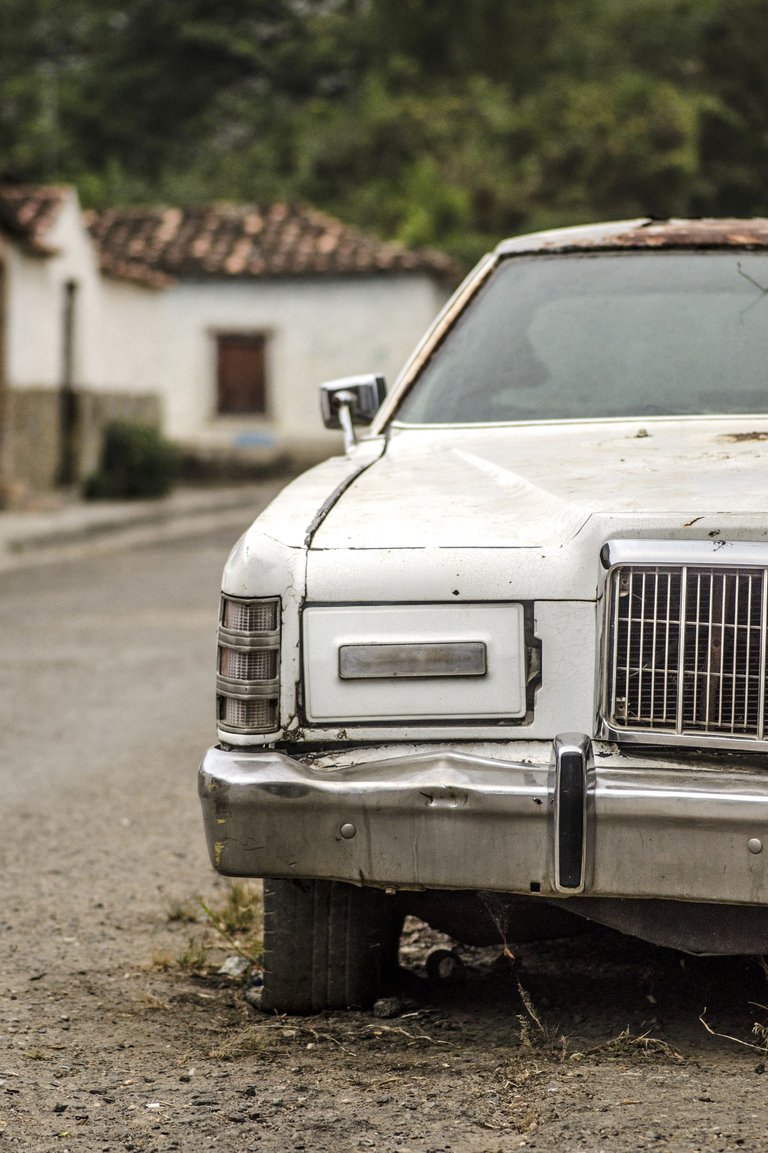
📷 08 - "My uncle Marcos's old Ford LTD" / "El viejo Ford LTD de mi tío Marcos"
Uncle Marcos (my mother's brother) was a very hard-working man and an expert businessman, he made his fortune during the second half of the last century and it was a source of admiration for us to see him driving through the streets of the village in his huge Ford LTD at the end of the 70s. My uncle was always saying things, he was a man of much talk and much action. Among the things he said, he used to refer to the "Communist Party of Venezuela (PCV)" whose symbol was the figure of a red cockerel (allegorical to the French revolution according to my uncle Marcos).... My uncle said that the ideology behind this PCV party was bad for the future of the people and the whole country, because they were against private capital and individual effort to better oneself and make a fortune... So when the PCV people came to the village and bought a small house to turn it into their local office, my uncle used to shout daily his bewilderment about it. However, when my uncle wanted to sell his Ford LTD, he sold it precisely to the head man of the local PCV office... As life would have it, both my uncle and the man whose name I do not remember, fell ill and died in the same year... Since then the "house of the cock's party" has been occupied only by Maria, the widow of that man. The old Ford has been on the street for many years, as Maria's only son also died and he was the only one who used to drive the huge vehicle.
Mi tío Marcos (hermano de mi madre) era un hombre muy trabajador y experto negociante, hizo fortuna durante la segunda mitad del siglo pasado y para nosotros era motivo de admiración verlo pasar en su enorme Ford LTD por las calles del pueblo a finales de los 70. Mi tío decía cosas siempre, era un hombre de mucho hablar y mucho hacer. Entre las cosas que decía, solía referirse al "Partido Comunista Venezolano (PCV)" cuyo símbolo era la figura de un gallo rojo (alegórico a la revolución francesa según decía mi tío Marcos)... Mí tío decía que la ideología detrás de ese partido PCV, era algo malo para el futuro del pueblo y de todo el país, pues estaban en contra de los capitales privados y del esfuerzo individual por superarse uno mismo y amasar fortuna... Así que cuando las personas del PCV llegaron al pueblo y compraron una pequeña casa para convertirla en su oficina local, mi tío solía gritar a diario su desconcierto al respecto. Sin embargo, cuando mi tío quizo vender su Ford LTD, se lo vendió precisamente al cabecilla de la oficina local del PCV... La vida quiso que ambos, mi tío y aquel señor cuyo nombre no recuerdo, enfermasen y muriesen el mismo año... Desde entonces la "casa del partido del gallo" solo está ocupada por María, la viuda de aquel hombre. El viejo Ford permanece en la calle desde hace muchos años, pues el único hijo de María también murió y era él el único que solía manejar el enorme vehículo.
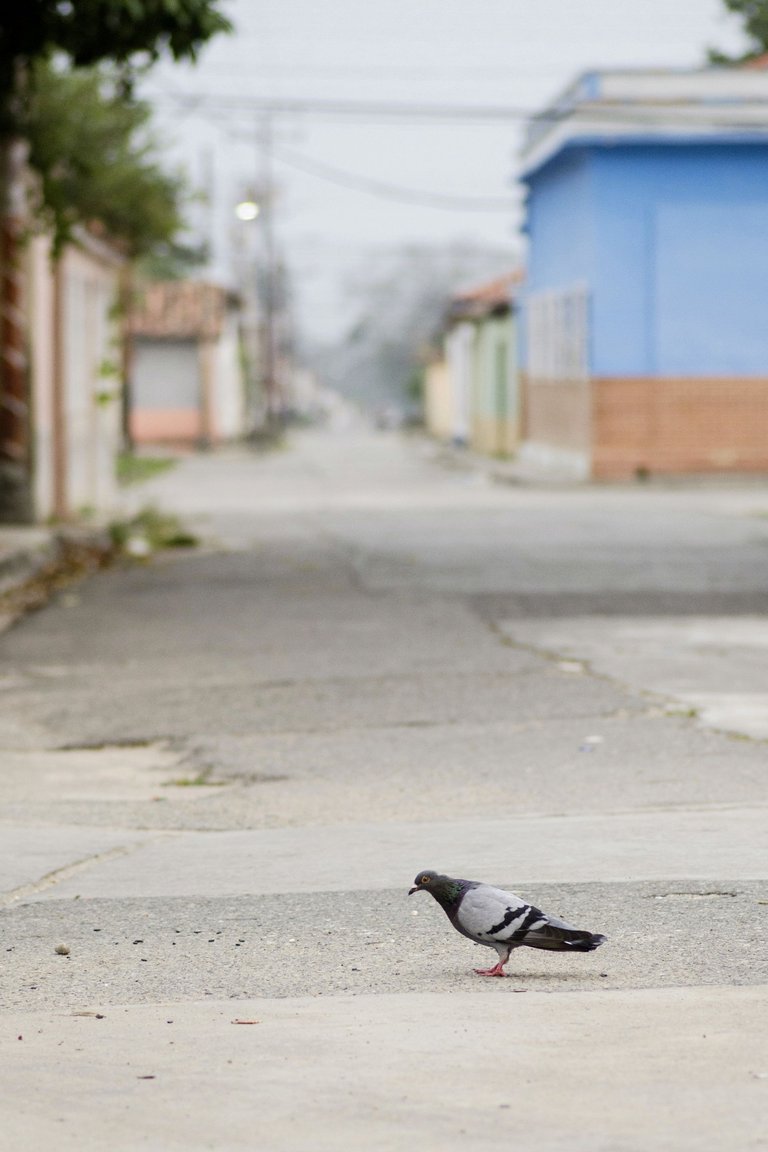
📷 09 - "The hospital street. " / "La calle del hospital"
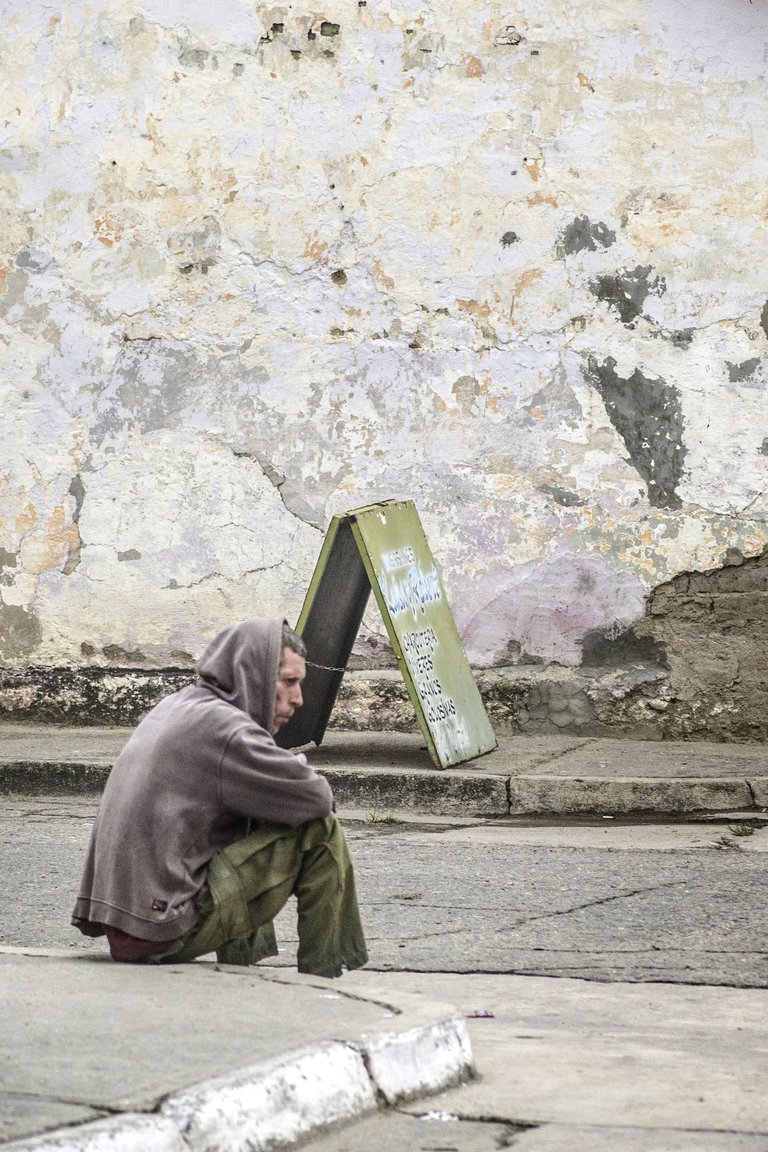
📷 10 - "Piriche " / "Piriche"
When I was a kid, back in the late 70s of the last century, "Piriche" was something like "the bully and puncher of our neighbourhood".... At that time, most of us had to be careful not to confront "Piriche" because the chances of getting beaten up or having a toy snatched from us were very high... Time passed and as we grew older we stopped playing in the streets and our memory erased the menacing figure of "Piriche" from our minds. That is how it was until he appeared again in the streets of the village some years ago. He is now very worn out, thin and aged. Little is known about what happens to him, as he speaks to few people. But it is usual to see him going in and out of the old hospital, as he takes some medicines there to be injected by the nurses on duty.
Cuando yo era un niño, allá a finales de los años 70 del siglo pasado, "Piriche" era algo así como "el bravucón y golpeador de nuestro vecindario"... Entonces, la mayoría de nosotros teníamos que andar con cuidado de no enfrentarnos a "Piriche" pues las posibilidades de recibir una paliza o de que nos arrebatase algún juguete, eran muy altas... El tiempo pasó y nos fuimos haciendo mayores y dejamos de jugar en las calles y nuestra memoria borró la figura amenazadora de "Piriche" de nuestras mentes. Así fue esto hasta que él apareció de nuevo en las calles del pueblo hace algunos años. Se le ve ahora muy mermado, delgado y envejecido. Poco se sabe de lo que le pasa, pues habla con pocas personas. Pero es usual mirarlo entrar y salir del viejo hospital, pues allí lleva algunas medicinas para que le sean inyectadas por las enfermeras de turno.
Thank you very much for your visit and appreciation!
¡Muchas gracias por pasar y apreciar!
ADDITIONAL TECHNICAL NOTE: Photographs captured with my Nikon D7000 DSLR camera in RAW format, then processed in Adobe Camera RAW for adjustments regarding light, sharpening, contrast and depth... They were then exported to JGP format on which minor modifications such as straightening and adding watermarks were carried out using PhotoScape 3.6.3.
NOTA TÉCNICA ADICIONAL: Fotografias capturadas con mi cámara DSLR Nikon D7000 en formato RAW, procesadas posteriormente en Adobe Camera RAW para ajustes relativos a luz, afilado, contraste y profundidad... Luego fueron exportadas a formato JGP sobre el cual se llevaron a cabo modificaciones menores como enderezado y agregado de marcas de agua usando PhotoScape 3.6.3.
"We make photographs to understand what our lives mean to ourselves." - Ralph Hattersley.
"Hacemos fotografías para comprender lo que nuestras vidas significan para nosotros mismos." - Ralph Hattersley.

Lens: Sigma 18-200mm f3.5-6.3 II DC OS HSM
Lens: Tokina ATX-PRO 100mm f/2.8 d MACRO
Lens: AF-S DX NIKKOR 55-300mm f/4.5-5.6G ED VR
Lens: AF-S DX NIKKOR 18-55mm f/3.5-5.6G VR
Lens: Nikon AF Nikkor 50 mm f/1.8d FX
Lens:AF-S DX NIKKOR 35mm f/1.8G
Lente: Sigma 18-200mm f3.5-6.3 II DC OS HSM
Lente: Tokina ATX-PRO 100mm f/2.8 d MACRO
Lente: AF-S DX NIKKOR 55-300mm f/4.5-5.6G ED VR
Lente: AF-S DX NIKKOR 18-55mm f/3.5-5.6G VR
Lente: Nikon AF Nikkor 50 mm f/1.8d FX
Lente: AF-S DX NIKKOR 35mm f/1.8G
Very nice photo my friend
Estas fotos cuentan demasiadas historias, y yo disfruto cada una. Gracias 🙌
Fotografías y colores que transmiten nostalgia por momentos, tristeza por otros . Buen trabajo artista!!!
A look through anecdotes and a bit of history among the vestiges of a village.
!discovery 40
This post was shared and voted inside the discord by the curators team of discovery-it
Join our Community and follow our Curation Trail
Discovery-it is also a Witness, vote for us here
Delegate to us for passive income. Check our 80% fee-back Program
📸👍
!DIY
You can query your personal balance by
!DIYSTATS